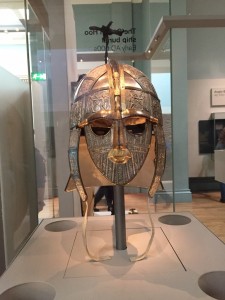By Evan Carroll
I have now been within the borders of the United Kingdom for exactly one week. In that time I have become more knowledgeable of Medieval and Renaissance England and certainly more affected by this new knowledge than I had expected before departing from the states. By use of daily historic site visits, our instructor, Dr. Bruening, has facilitated a course that is both inspiring and informational.
The site visit of day two was to the British Museum. To recount all of the items I found beautiful and revealing related to our course held within its walls would be impossible in this setting, let alone the items from other periods and regions. Of the British Museum exhibits related to the British Isles in the middle ages, I found the Viking Exhibit to be singular. Before taking this course, I was ignorant of the cultural impacts of the Danes on Britain outside the well known raids on the coastal monasteries. It was enlightening to learn of how the feelings of resentment the Danes had for people of the Christian faith had been fostered and how this initial targeting of the British coast led to Danish settlement and control of much of Britain, heavily influencing language and culture of the island.
On a more superficial note, I find it interesting that, while at that time most of the rest of the world used gold as the base of their currency, the Viking peoples placed much more value in silver and used it as their currency base, as exemplified in the exhibited artifacts.
On Thursday, our site visit consisted of a day trip to the northern town of York. We have learned that, like most cities of England, York is an ancient city with a tumultuous history. In medieval Britain, whoever controlled York, were it the Romans, Vikings, English, or Normans, controlled the North. At York one can find York Minster cathedral, the York City Walls, and Clifford’s Tower. Built by William the Conqueror in 1068 as a statement of power in the region, Clifford’s Tower, wooden at the time, only stood for a little over a century before it was burned to the ground with about 150 Jews inside. It wasn’t until 1245, when the structure was again destroyed, this time in a storm, that Henry III had it rebuilt in a stone quatrefoil shape of French influence. At this time, the shape was unique in England. The origin of the tower’s name is either due to the fact that Roger de Clifford was hanged there for opposing Edward II, or the claim of being hereditary tower constables by the Clifford family.
With one week down and one week to go, I am happy for all I have experience and learned and I can hardly wait to see what treasures, old and new, will be revealed to me in the coming days.

